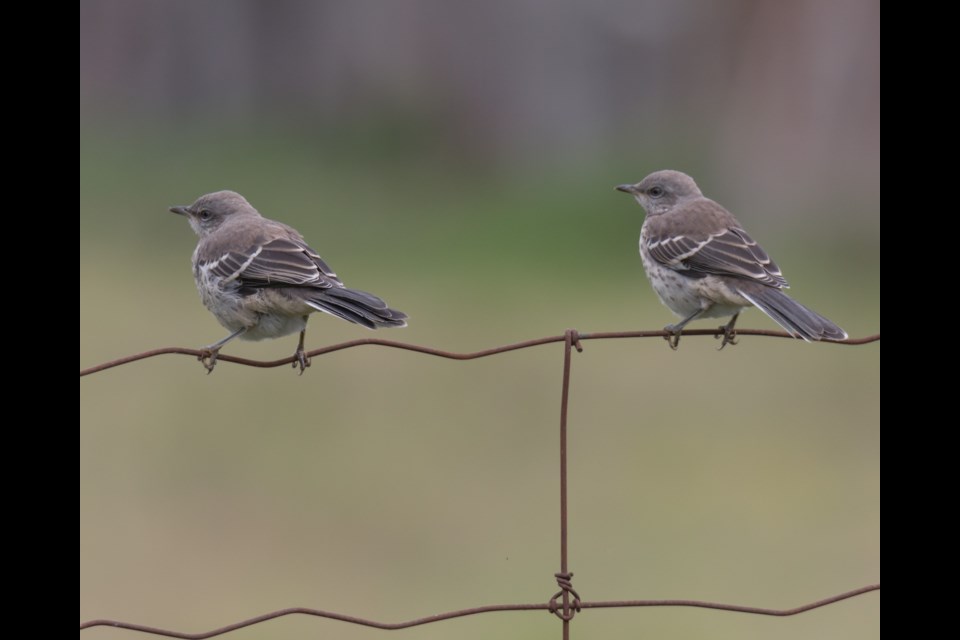As we usher in the new year, I will be participating in a project that is both educational for me and something that gives me enjoyment. It's also a perfect way for me to give back to my mentors and the birding community for all of their efforts and contributions to my birding journey.
Known as the Ontario Breeding Bird Atlas 3 (2021-2025), it is an ambitious and collaborative project aimed at mapping the abundance and distribution of approximately 300 species of breeding birds.
This enormous citizen science project is driven by and only achieved when the province's birders come together as a community to work together for a single purpose.
Typically, breeding bird atlases are completed for each jurisdiction every 20 years. The year 2021 marks the start of Ontario's third and is promising to be the best one yet.
The premise of the atlas is based on the observation and collection of data pertaining to birds and, more specifically, breeding behaviours, including nests with young or eggs, adults carrying fecal sacks, feeding young, carrying food, recently fledged young, occupied nest, used nest, distraction display, nest building, carrying nesting material, and the list goes on.
Any wild bird that is breeding is targeted, including a wide variety of waterfowl, shorebirds, raptors, gulls, terns, herons, woodpeckers, songbirds, and more.
There are five partner agencies involved in the Ontario Breeding Birds Atlas; Environment and Climate Change Canada, Birds Canada, Ontario Ministry of Natural Resources and Forestry, Ontario Field Ornithologists and Ontario Nature.
The Sault Ste. Marie Region reaches as far north as Batchawana Bay with its eastern boundary at Thessalon.
Sault Ste. Marie Region has three regional coordinators; Ken McIlwrick, Lisa Venier, and Carter Dorscht – spokesperson for the group. I reached out to them for some further information to share, to bring the project to light, and to help them recruit volunteers for their teams.
"Breeding bird atlases provide invaluable data on the abundance and distribution of breeding bird populations," said Dorscht. "Data collected as part of the atlas will also provide us with insight into how breeding bird populations have changed since the previous two atlases in Ontario (1981-85 and 2001-05).
"The results of this atlas will provide important data on birds to guide environmental policies and conservation strategies for years to come. The data collected will provide essential information for researchers, scientists, government officials, and conservation professionals to improve the conservation status and appreciation for birds in Ontario."
At the provincial level, there is a main coordinator, an assistant coordinator, a technical group, as well as a team of writers who provide overall direction, tools, resources, protocols, training, research capacity, IT support, statistical analysis and literary input. These people ensure that there is adequate sampling coverage across the 47 atlas regions in Ontario, analyze, write up and produce a finalized document as well as online resources.
The regional coordinators of each of the 47 atlas regions across Ontario are important volunteers participating in the project. They know their region well in addition to the birds and birders active within it.
Each coordinator is tasked with recruiting volunteer atlas participants, assigning participants to sampling squares, providing training and support when needed, organizing and reviewing the collected data, and ensuring that there has been adequate coverage and sampling intensity within their region.
"Combined with the actual 'atlasers' who are the boots-on-the-ground participants, that collect most of the breeding bird data, the atlas is an excellent showcase of how a well thought out and organized citizen science project can produce an incredibly useful, easily accessible and very important natural resource conservation product," explained Dorscht.
"The atlas begins on Jan. 1, 2021 and ends on Dec. 31, 2025. While most of our birds breed from about May through August, some species do breed outside of the typical breeding season, like crossbills and Canada Jays, so it's possible to find breeding evidence year-round.
"An atlas divides the province into 10 ×10 km squares, and then volunteer birders find as many breeding species as possible in each square. Volunteers who know birds well by song can also do five-minute 'point counts', 25 of which are needed to provide an index of the abundance of each species in a square. There are approximately 2,000 squares south of Sault Ste. Marie and Sudbury, and we need to cover them all! In northern Ontario, due to its sheer size and difficulty of access, a sample of squares in each 100×100 km block will be covered.
"All skill levels are encouraged to participate! Birders of all skill levels contribute to the atlas in order for it to be a success. It is useful if you have some level of birding skills to get started. The atlas is a great opportunity for less experienced birders to improve their birding skills over the course of the five-year project. Beginner birders will be encouraged to buddy with a more experienced birder to learn first-hand in the field," said Dorscht.
Data is then submitted online either through the Ontario Breeding Birds website or another app.
Because of the sheer size of this project, an enormous number of volunteers are needed. The regional coordinators are looking to recruit as many volunteers for their regions as possible. If you feel you have an interest in birds, some birding skills, you would like to learn more about birding or honing those skills and you have interest in the project perhaps you would consider participating also. You can give as much or as little of your time as you wish.
To get involved, all you have to do is register online on the Ontario Breeding Bird Atlas website and select which regions you are interested in participating in. From there, a regional coordinator will be in touch with you to make arrangements how best to use your skills and knowledge for the atlas.
